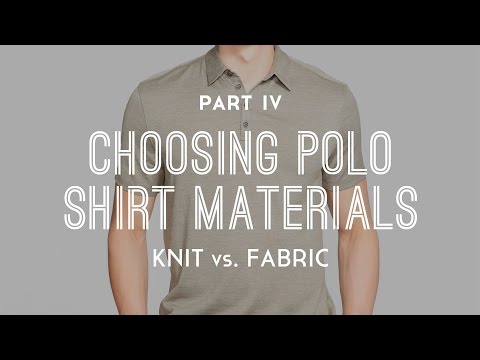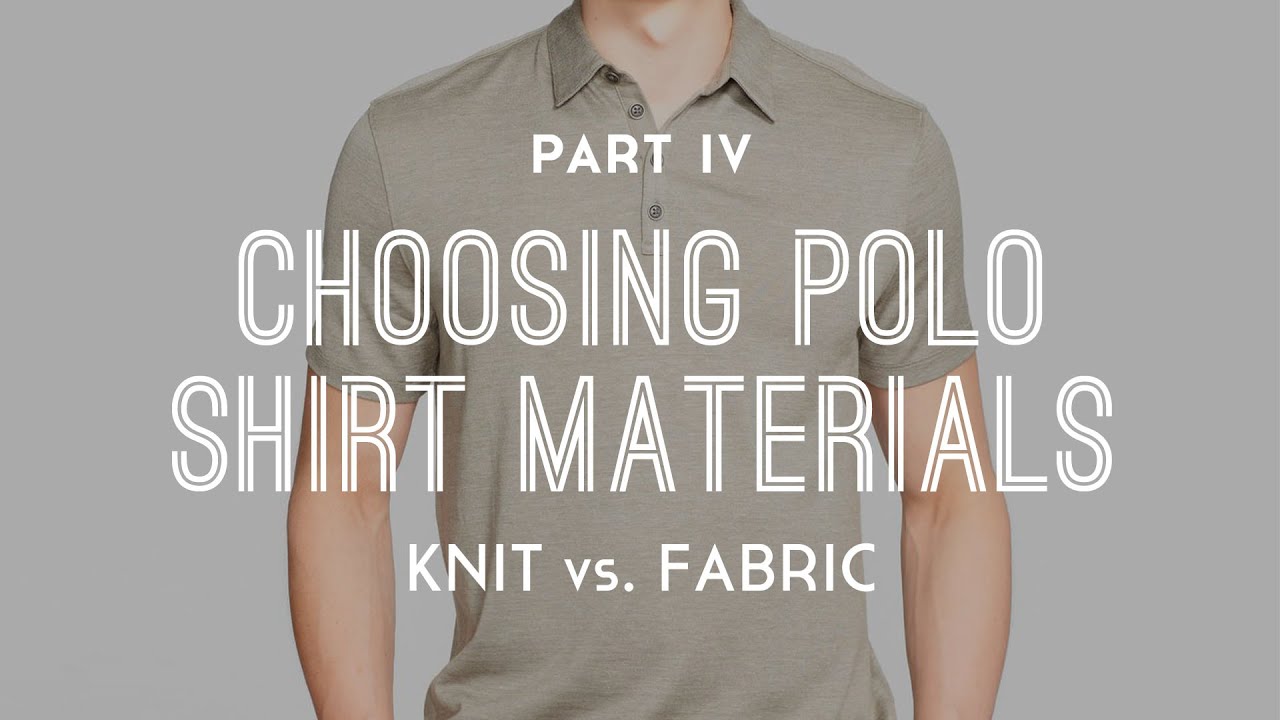Polo fabric is a truly remarkable textile that combines style, comfort, and durability in one exquisite package. Crafted with meticulous attention to detail, this fabric is designed to elevate your fashion game to new heights. Whether you’re aiming for a casual or more sophisticated look, polo fabric has got you covered.
Imagine wrapping yourself in a fabric that feels like a gentle caress against your skin, providing unrivaled softness and breathability. With its luxurious texture, polo fabric guarantees a comfortable wearing experience that will make you never want to take it off. Its unique blend of high-quality fibers ensures long-lasting durability, allowing you to enjoy your favorite polo garment for years to come.
Not only is polo fabric incredibly comfortable, but it also exudes an air of elegance and sophistication. Its smooth and refined finish adds a touch of class to any outfit, making it perfect for both formal occasions and casual outings. Stand out from the crowd with the timeless appeal of this fabric, which effortlessly combines versatility and style.
Whether you’re a fashion enthusiast or simply someone who appreciates quality, polo fabric is a must-have in your wardrobe. Its unmatched combination of comfort, durability, and sophistication will leave you captivated and eager to explore the endless possibilities it offers. Embrace the world of polo fabric and experience fashion at its finest.

The Evolution of Polo Fabric: A Brief History
Polo fabric, also known as pique, is a versatile textile that has been a staple in the fashion industry for decades. Its unique texture and breathability make it a popular choice for clothing, particularly for polo shirts. In this article, we will explore the history and characteristics of polo fabric, its various uses, and why it remains a sought-after material in the fashion world today.
The Origins of Polo Fabric
Polo fabric dates back to the 19th century and was initially developed in France. It was created as a durable fabric for horseback riding and polo matches, hence the name. The fabric’s unique texture, achieved through a weaving technique called “pique,” allowed it to withstand the rigors of the sport and provide comfort to the riders.
The Characteristics of Polo Fabric
Polo fabric is characterized by its distinct raised pattern, which is achieved by weaving fine yarns into a waffle or honeycomb-like texture. This texture creates small air pockets within the fabric, making it highly breathable and ideal for warm weather. Additionally, the fabric’s tight weave gives it durability, ensuring longevity even with frequent use and washing.
Polo fabric is typically made from natural fibers such as cotton or silk, although synthetic blends have also become popular in recent years. The use of natural fibers enhances the fabric’s breathability and moisture-wicking properties, making it comfortable to wear in hot and humid climates. Furthermore, the fabric’s ability to absorb moisture helps to keep the wearer dry by drawing sweat away from the body.
The Versatility of Polo Fabric
While polo shirts are undoubtedly the most well-known use of polo fabric, its versatility extends far beyond that. The fabric’s unique texture and characteristics make it suitable for a wide range of clothing, including dresses, skirts, trousers, and even outerwear.
One of the reasons polo fabric is so versatile is its ability to be dyed in a wide array of colors. The fabric readily absorbs dyes, resulting in vibrant and long-lasting hues. This makes it a popular choice for designers who want to create eye-catching garments.
Furthermore, polo fabric’s durability and resistance to wrinkling make it an excellent choice for travel and everyday wear. The fabric can withstand frequent washing without losing its shape, making it low-maintenance and perfect for those with a busy lifestyle.
Polo Fabric in High Fashion
While polo fabric is often associated with casual attire, it has also made its mark in high fashion. Designers have embraced the fabric’s unique texture and breathability, incorporating it into their collections in innovative ways.
Some designers have used polo fabric to create structured garments, such as tailored jackets and suits. The fabric’s ability to hold its shape gives these pieces a polished and refined look, while still providing comfort to the wearer.
Other designers have taken advantage of polo fabric’s versatility by combining it with other textiles. Silk and lace overlays, for example, can add a touch of elegance to polo fabric garments, elevating them to the realm of high fashion.
The Future of Polo Fabric
Polo fabric continues to be a popular choice in the fashion industry, and its future looks promising. As technology advances, new variations of the fabric are being developed, incorporating features such as UV protection and moisture-wicking properties.
Additionally, sustainability has become a significant concern in the fashion industry, and polo fabric is no exception. Many manufacturers are now producing eco-friendly versions of the fabric, using organic or recycled fibers and reducing the environmental impact of production.
In conclusion, polo fabric has come a long way since its humble beginnings as a fabric for polo matches. Its unique texture, breathability, and versatility have made it a favorite among designers and consumers alike. Whether you’re wearing a classic polo shirt or a high-fashion garment, the comfort and style of polo fabric are undeniable.
The Ultimate Guide to Selecting the Perfect Polo Shirt Material
Video Source : Gentleman’s Gazette
List of Polo Fabric
Polo Fabric Information
| Property | Description |
|---|---|
| Composition | Polo fabric is typically made from a blend of natural and synthetic fibers. The most common composition includes a combination of cotton and polyester, which provides both comfort and durability. The cotton content offers breathability and softness, while polyester adds strength and resistance to wrinkles. |
| Weave | Polo fabric is commonly woven using a piqué knit technique. This distinctive weave creates a textured, raised surface with a unique diamond-shaped pattern. The piqué knit not only adds visual interest but also enhances the fabric’s breathability and moisture-wicking properties, making it ideal for sportswear. |
| Weight | Polo fabric is known for its medium-weight structure. It strikes a balance between being lightweight enough for comfort and heavy enough to provide durability and retain its shape over time. This weight makes it suitable for various climates and seasons, as it offers sufficient insulation without causing overheating. |
| Care Instructions | To maintain the quality of polo fabric, proper care is essential. It is advisable to machine wash it in cold water with similar colors to prevent color bleeding. Using a mild detergent and avoiding bleach helps preserve the fabric’s integrity. Additionally, tumble drying on low heat or air-drying is recommended to prevent shrinkage and minimize the risk of wrinkles. |
| Applications | Polo fabric is widely utilized in the production of polo shirts, hence the name. Its breathable and moisture-wicking properties make it suitable for various sports activities, such as tennis, golf, and horseback riding. Additionally, its versatile nature extends its usage to casual wear, creating comfortable yet stylish clothing options. |
| Advantages | Choosing polo fabric offers numerous advantages. Its blend of cotton and polyester provides the perfect combination of softness, durability, and wrinkle resistance. The piqué knit weave enhances breathability and moisture management, ensuring comfort during physical activities. Furthermore, its medium-weight structure allows for versatility in various climates, making it a reliable choice for both active and casual wear. |

